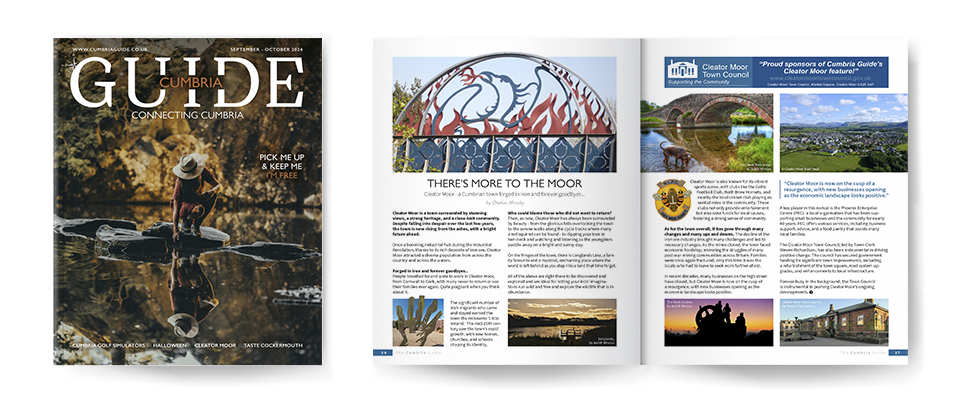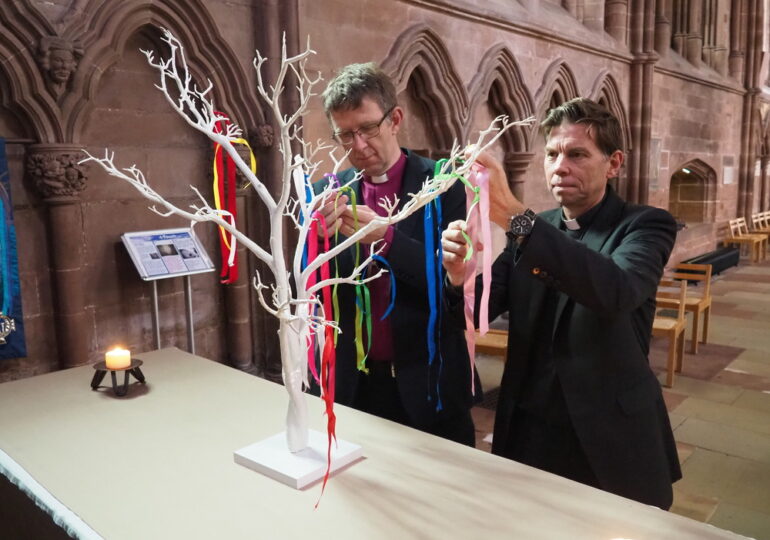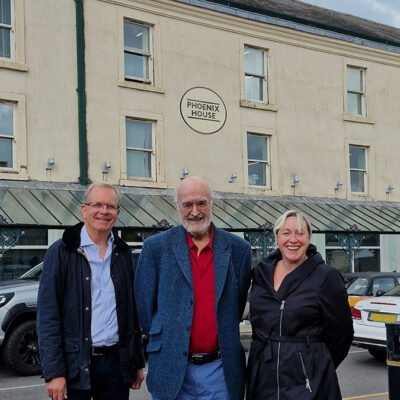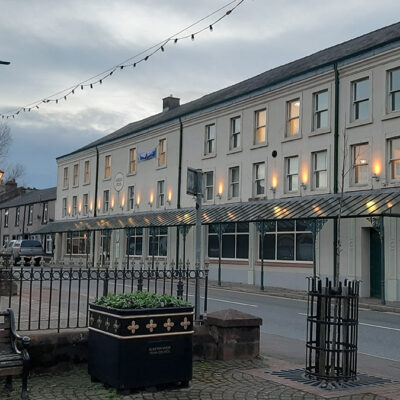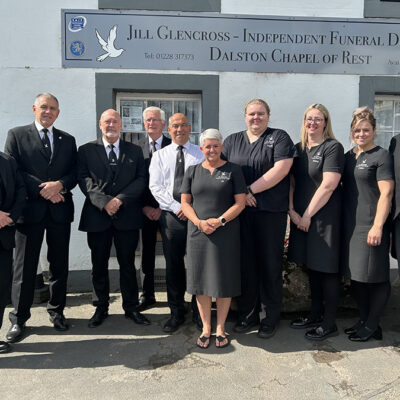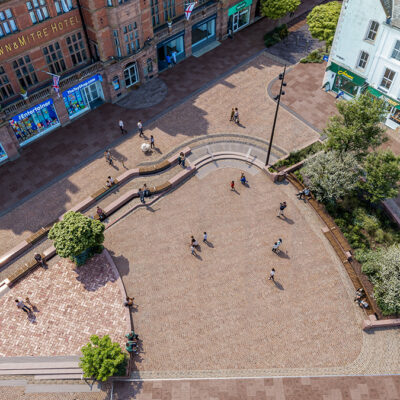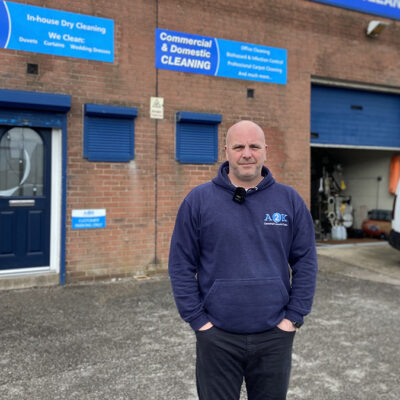Cleator Moor – a Cumbrian town forged in iron and forever goodbyes…

THERE’S MORE TO THE MOOR
Cleator Moor – a Cumbrian town forged in iron and forever goodbyes…
by Stephen Murphy
Cleator Moor is a town surrounded by stunning views, a strong heritage, and a close-knit community. Despite falling into despair over the last few years, the town is now rising from the ashes, with a bright future ahead.
Once a booming industrial hub during the Industrial Revolution, thanks to its rich deposits of iron ore, Cleator Moor attracted a diverse population from across the country and across the waters.
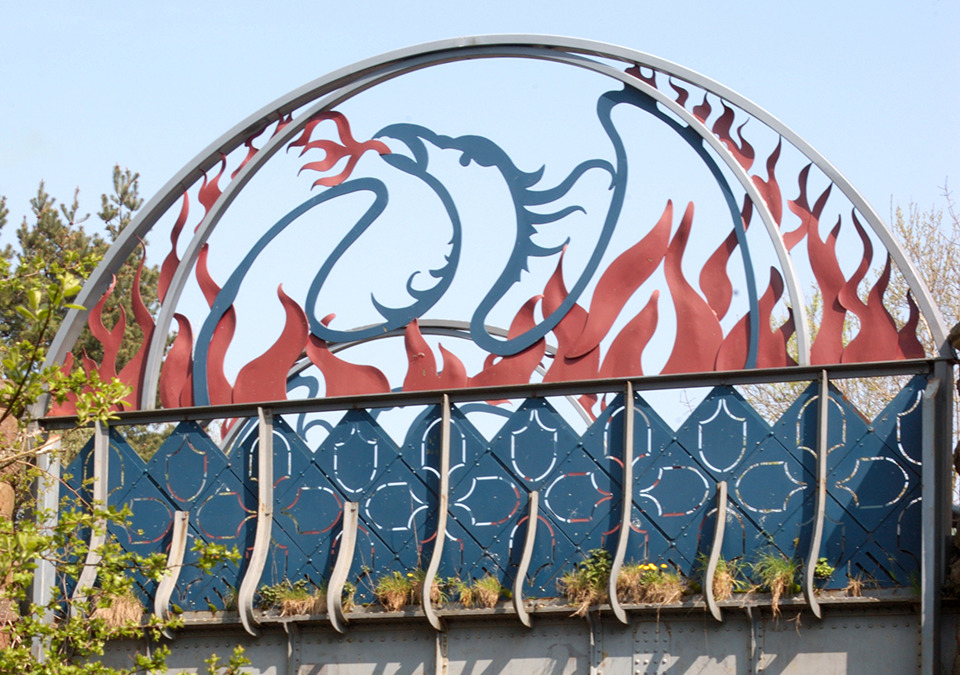
Forged in iron and forever goodbyes…
People travelled far and wide to work in Cleator Moor, from Cornwall to Cork, with many never to return or see their families ever again. Quite poignant when you think about it.
The significant number of Irish migrants who came and stayed earned the town the nickname ‘Little Ireland.’ The mid-19th century saw the town’s rapid growth, with new homes, churches, and schools shaping its identity.
Who could blame those who did not want to return?
Then, as now, Cleator Moor has always been surrounded by beauty – from the glorious fells overlooking the town to the serene walks along the cycle tracks where many a red squirrel can be found – to dipping your toes in hen-beck and watching and listening as the youngsters paddle away on a bright and sunny day.
On the fringes of the town, there is Longlands Lake, a family favourite and a mystical, enchanting place where the world is left behind as you step into a land that time forgot.
All of the above are right there to be discovered and explored and are ideal for letting your kids’ imaginations run wild and free and explore the wildlife that is in abundance.
Cleator Moor is also known for its vibrant sports scene, with clubs like the Celtic Football Club, Wath Brow Hornets, and nearby the local cricket club playing essential roles in the community. These clubs not only provide entertainment but also raise funds for local causes, fostering a strong sense of community.

As for the town overall, it has gone through many changes and many ups and downs.
The decline of the iron ore industry brought many challenges and led to necessary changes. As the mines closed, the town faced economic hardship, mirroring the struggles of many post-war mining communities across Britain. Families were once again fractured, only this time it was the locals who had to leave to seek work further afield.
In recent decades, many businesses on the high street have closed, but Cleator Moor is now on the cusp of a resurgence, with new businesses opening as the economic landscape looks positive.
A key player in this revival is the Phoenix Enterprise Centre (PEC), a local organisation that has been supporting small businesses and the community for nearly 40 years. PEC offers various services, including business support, advice, and a food pantry that assists many local families.
The Cleator Moor Town Council, led by Town Clerk Steven Richardson, has also been instrumental in driving positive change. The council has secured government funding for significant town improvements, including a refurbishment of the town square, road system upgrades, and enhancements to local infrastructure.
Forever busy in the background, the Town Council is instrumental in pushing Cleator Moor’s ongoing developments.

Looking ahead, Cleator Moor’s future is bright, with several exciting projects on the horizon.
The redevelopment of the Leconfield industrial estate is set to transform it into a hub for manufacturing, engineering, and robotics, bringing new opportunities to the town.
Additionally, the Kangol Factory site is being redeveloped into a commercial space, attracting new businesses and boosting the local economy.
Headed by iSH, the Leconfield site will be transformed into an industrial hub and campus centred around manufacturing, engineering, and robotics developments.

Gary McKeating, MD of iSH, said:
“Leconfield Industrial Estate has stood mostly empty for many years, and I think seeing it utilised for something that will bring so much to the town is exciting for the community. Cleator Moor is a great town with a lot of potential, and we are looking forward to seeing the impact that this project will have on the area.”
Much to be happy about…
The last government chose Cleator Moor to be a recipient of the Town Deal Fund.
The Cleator Moor Town Deal aims to breathe new life into the town, and about time too.
With an overall investment of over 40 million pounds, lots of cracking initiatives and projects are on the horizon, which will boost the local economy, create many jobs, support local businesses, improve the infrastructure of the town, and enhance community facilities even further.

Once everything is in place and Cleator Moor has been regenerated, it will be an even more attractive place to live, work, and visit…
Another key aim is to enhance the cultural vibrancy of the town; why not?
Cleator Moor has always had a quiet yet bubbling cultural offering, from art to musicians and poets. Conrad Atkinson was a famed artist and was responsible for the three sculptures in the market square.
Conrad was born in the town in 1940, and he created these special works as a memorial to the town’s once-thriving mining industry; they are known as the Miner, the Phoenix, and the Hand.
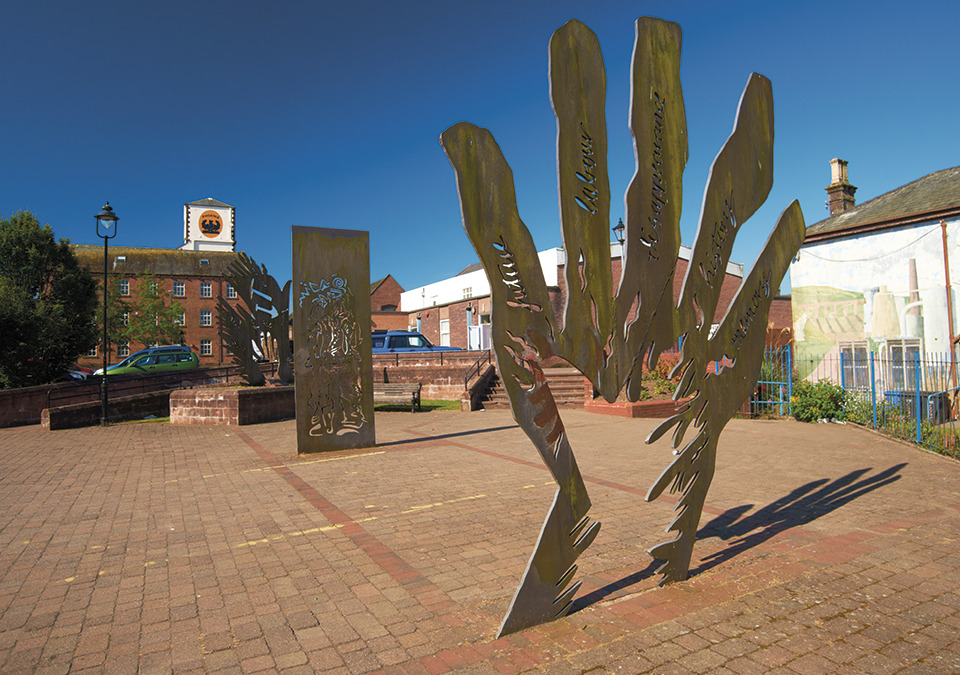
Art is very much on show via Craig Hamilton Art on the Main Street, a fantastic artist in his own right who supports many other local artists, all of whom are seriously talented. If you have yet to call in, do so; you’ll be surprised.
There are a further two artists currently working from Phoenix Enterprise Centre; Richard Wood has been working from the centre since 1994. Richard creates sculptures, small drawings, and even jelly in trees—ask him about it!
Another internationally famous artist associated with the town is L. S. Lowry; he visited on many occasions to stay with friends. He painted Cowle Fish and Chip Shop, the church at Wath Brow, the Co-op on Market Square, and the former Westminster Bank.
Other notable artists to capture Cleator Moor on canvas were Percy Kelly, who also painted scenes of the town, and Millom-born poet Norman Nicholson wrote about the mine at Cleator Moor.
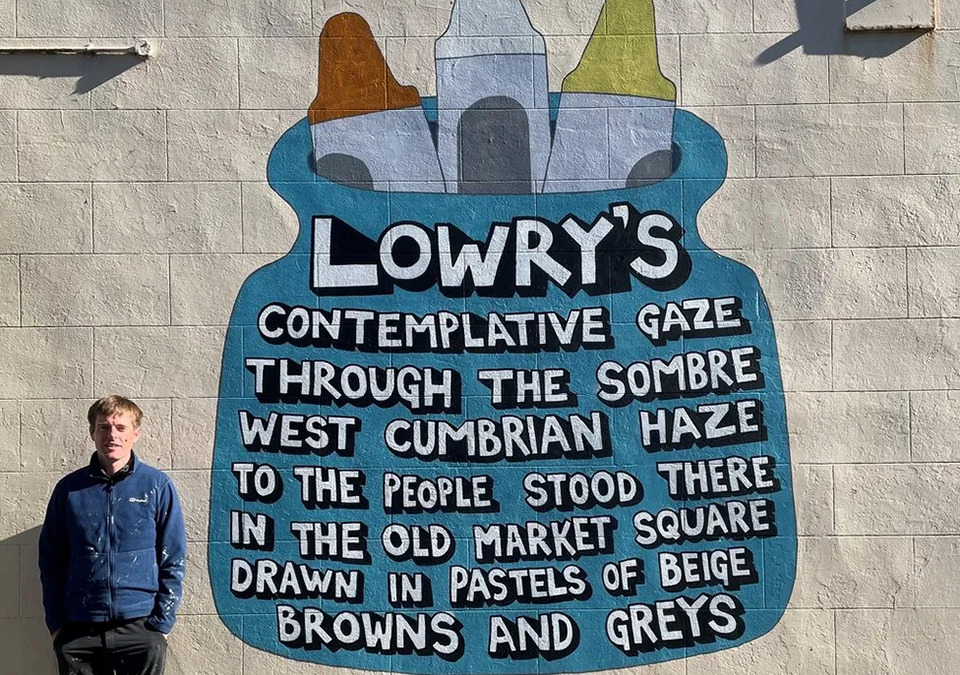
Bringing Colour to Cleator Moor
Dotted about Cleator Moor, you will see eye-popping, colourful art murals accompanied by witty ditties; they elevate the townscape and make a positive impression and difference.
Commissioned in 2022, the street artist Angry Dan created the murals, which were inspired by works of great British creatives including LS Lowry, William Wordsworth, and Beatrix Potter.
Roll on two years, and the murals all look as bright and as colourful as on the day they were created; they make a real difference. Hopefully, more works will be commissioned in the future and further enhance the town.
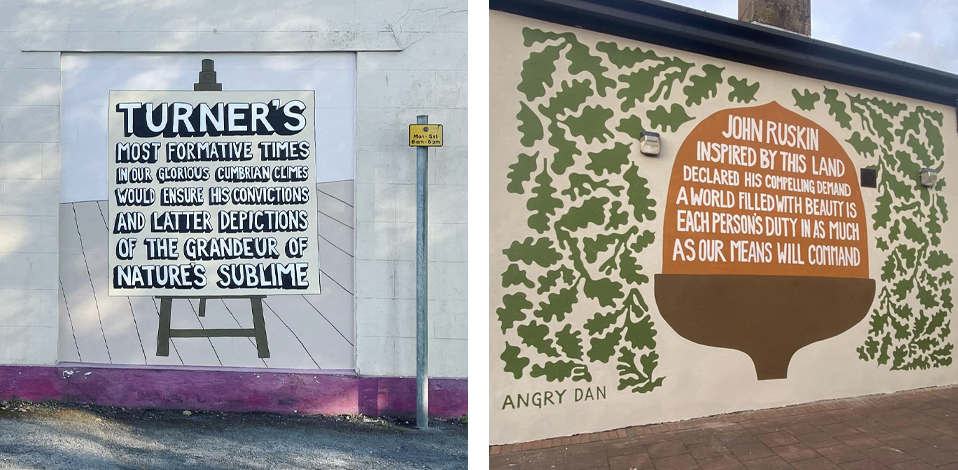
Cleator Moor has much to offer today!
The town boasts a variety of cafes and shops, including long-standing businesses like H. Routledge’s, which has been serving the community for 70 years.
It’s also a family-friendly town with excellent schools, nurseries, and a fantastic playpark, which is looked after by Cleator Moor Town Council.
The addition of ‘Rest and Play’, a soft play centre and café, means families no longer have to leave town to entertain young children and sit back and enjoy a cuppa while the kids play away!
With its rich heritage and a promising future, Cleator Moor is poised for a remarkable comeback, maintaining its strong community spirit at its core. And for those who visit, the breathtaking view as you enter the town is just the beginning of what Cleator Moor has to offer.
One of my favourite views in all of Cumbria, overlooks the town, when driving down past the swimming baths at Hensingham, heading down into Cleator Moor, there before you lay the views of Crag Fell – Grike and Dent and of course High Grange Homes which are as stunning as the views.

You never seem to get the same view as it’s forever changing thanks to the weather conditions, but on a sunny day it does take your breath away, and Cleator Moor looks amazing.
The beauty of Cleator Moor is the location, the views, the cycle routes, and the amazing places nearby, including Ennerdale Water, Longlands Lake, and Clints Quarry.
Cleator Moor is the gateway to the enchanting Ennerdale Valley. Dent Fell, sometimes known as Long Barrow, is one of the first fells that walkers climb on Wainwright’s famous Coast to Coast walk. The views from there are amazing; there are scenes of the stunning coastline and the lake district to enjoy.
For those who like to get active, walk or cycle the old railway line from Whitehaven to Ennerdale – the track, which has now been tarmacked, is part of the West Cumbria cycle network, and forms part of the Sustrans C2C cycle route from Whitehaven to Sunderland.
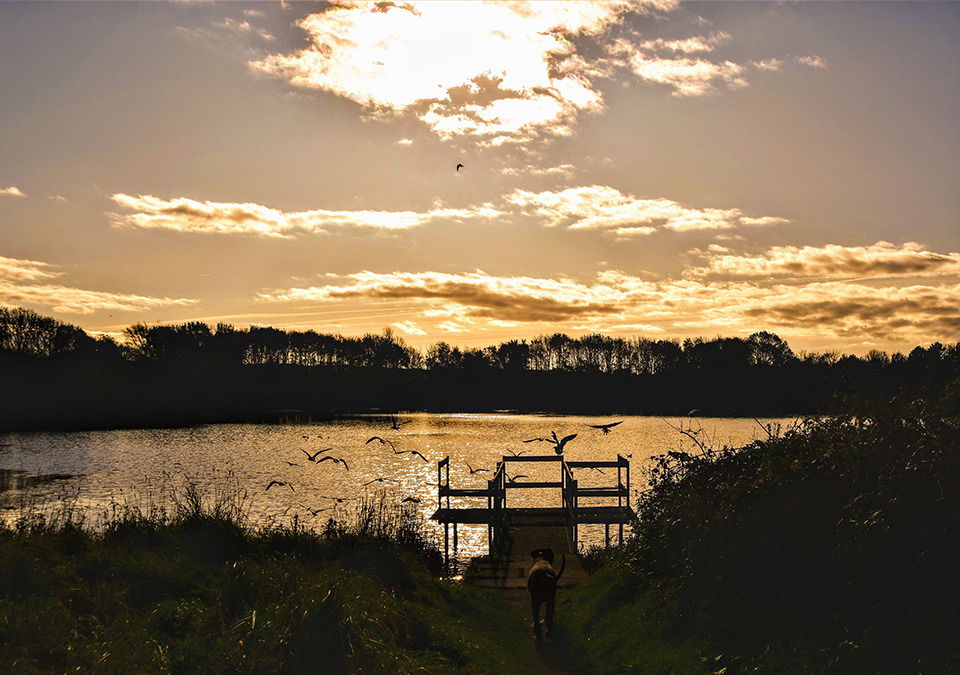
Love wildlife?
Longlands, Clints Quarry, Site of Special Scientific Interest (SSSI), and the old railway lines are all teaming with a variety of species, including red squirrels, peregrine falcons, deer, and treecreepers, to name but a few.
So all in all, it is not a bad place, eh?
Stunning views, lots of wildlife, great cafes, great workspaces, millions of pounds of incoming investment – it’s on the up and up, and now is an ideal time to invest in this cracking little town and discover why ‘There’s More to the Moor…’
To learn more about what’s happening, follow Cumbria Guide on our social media
Share It:


